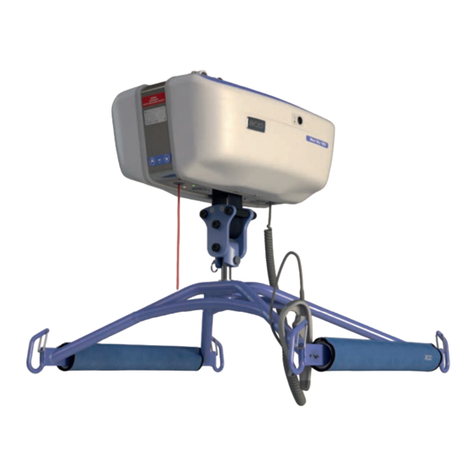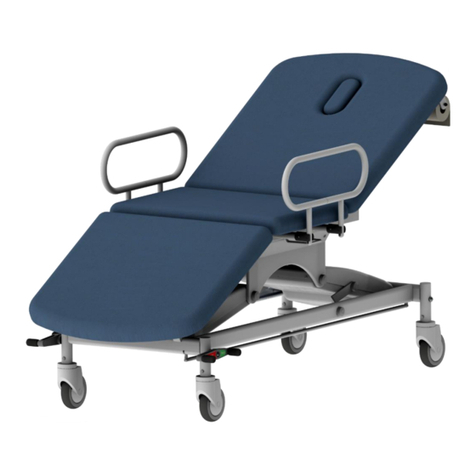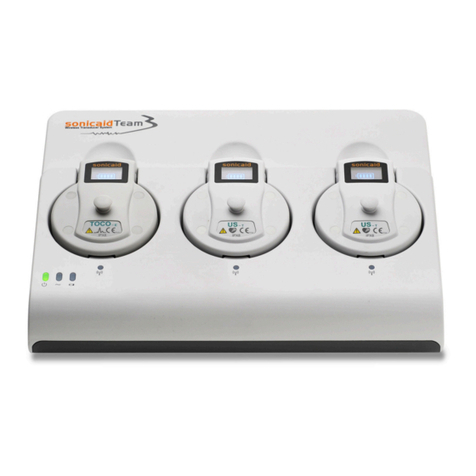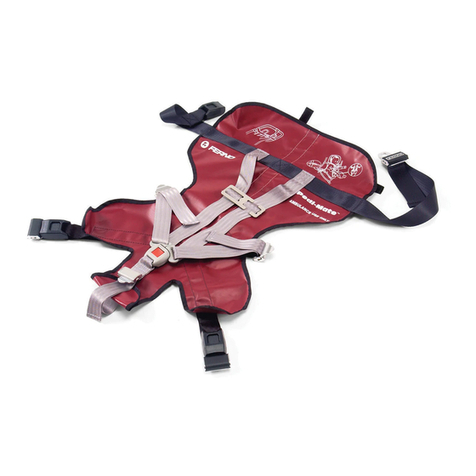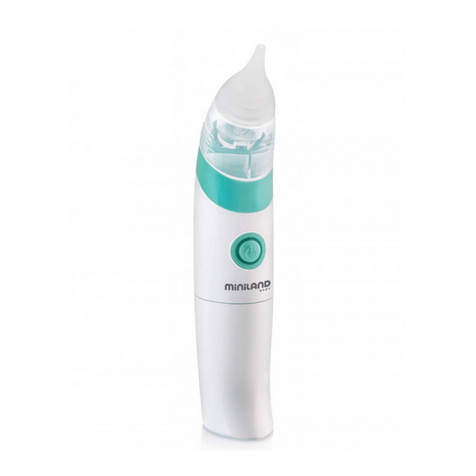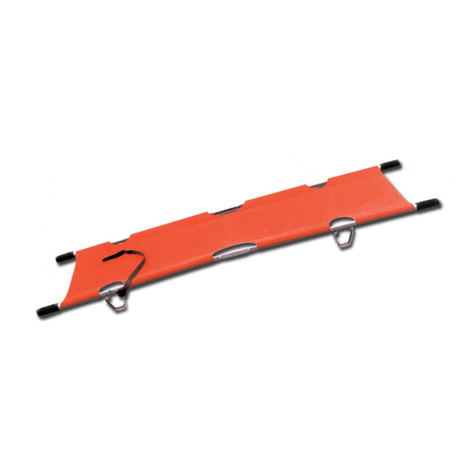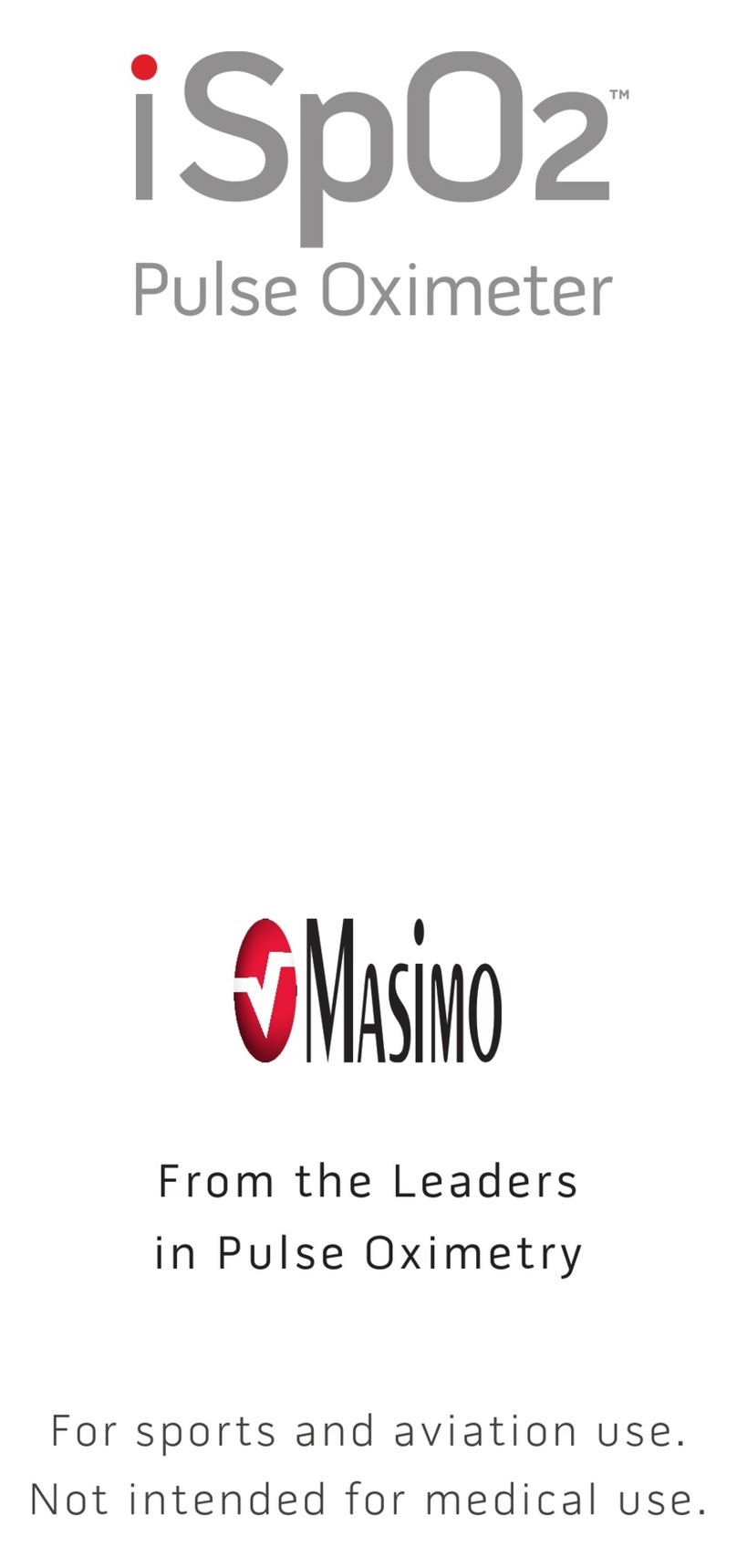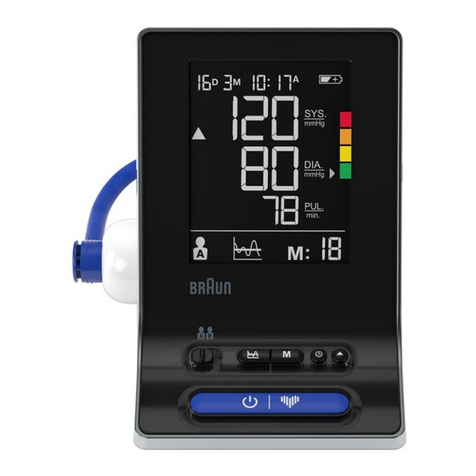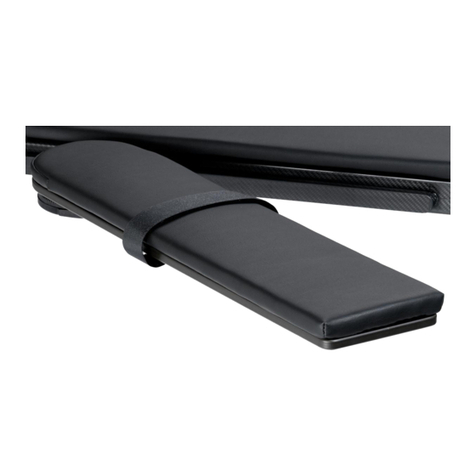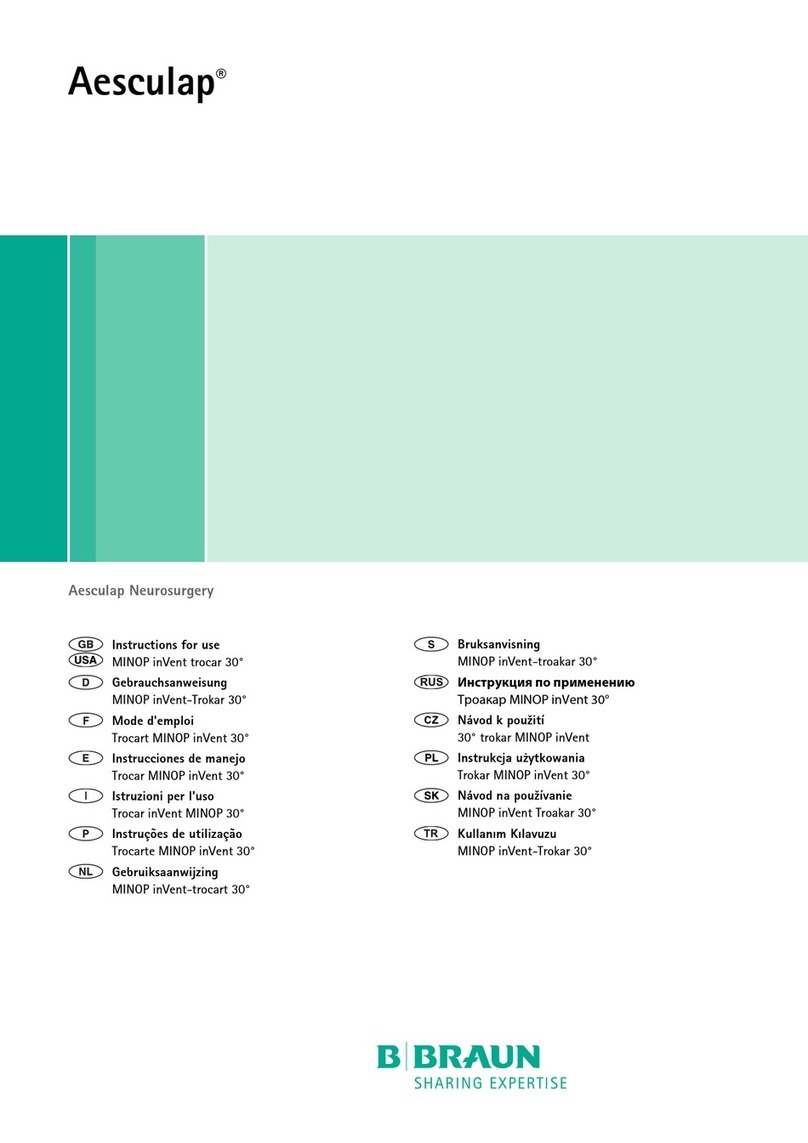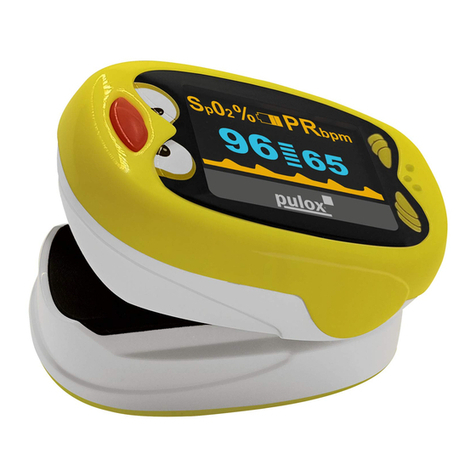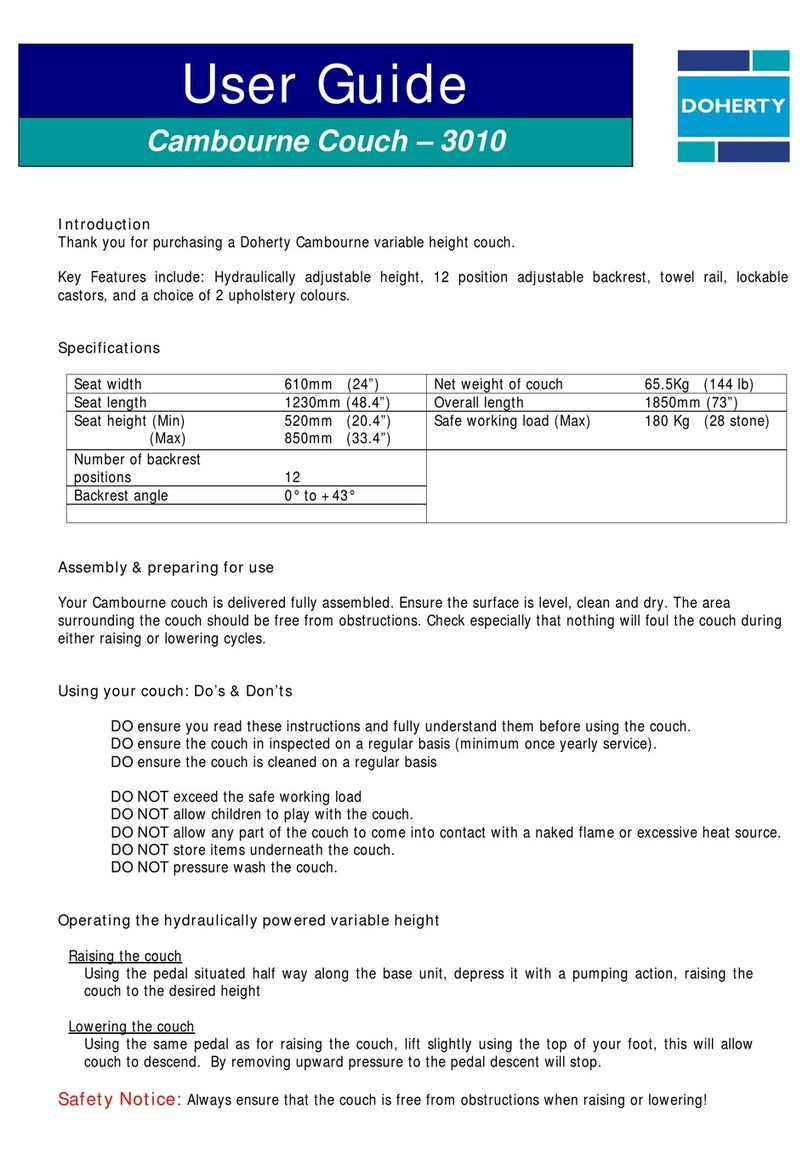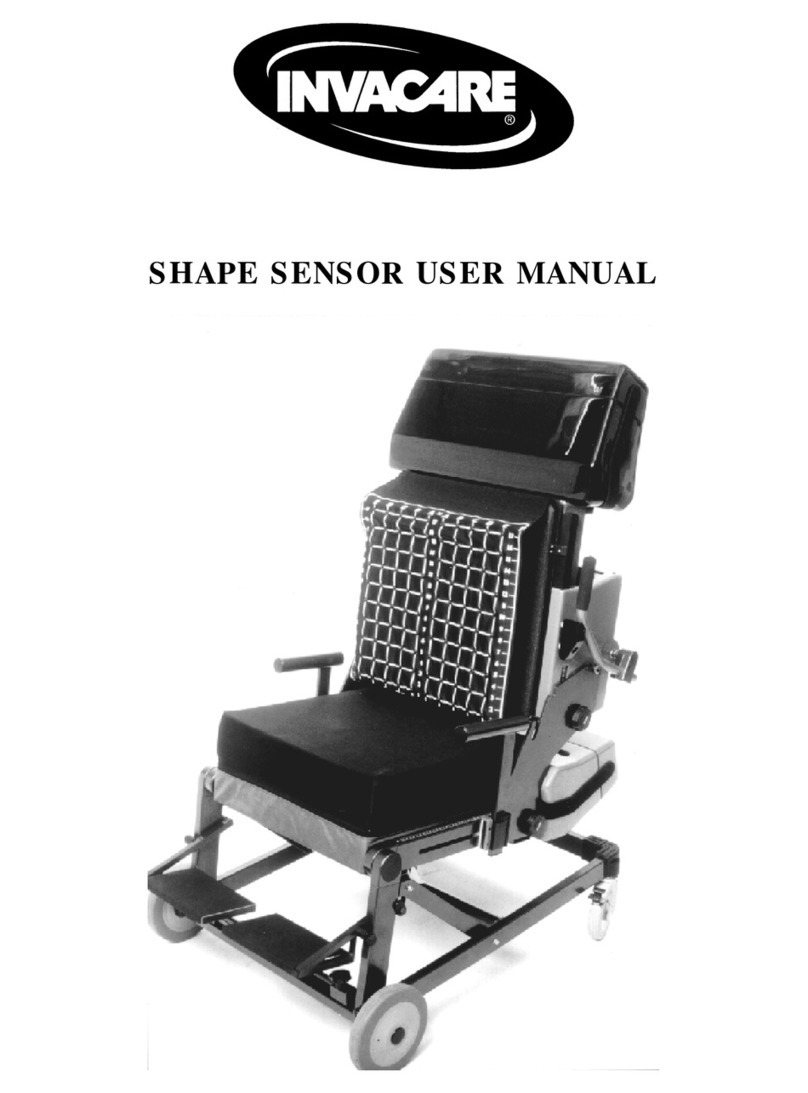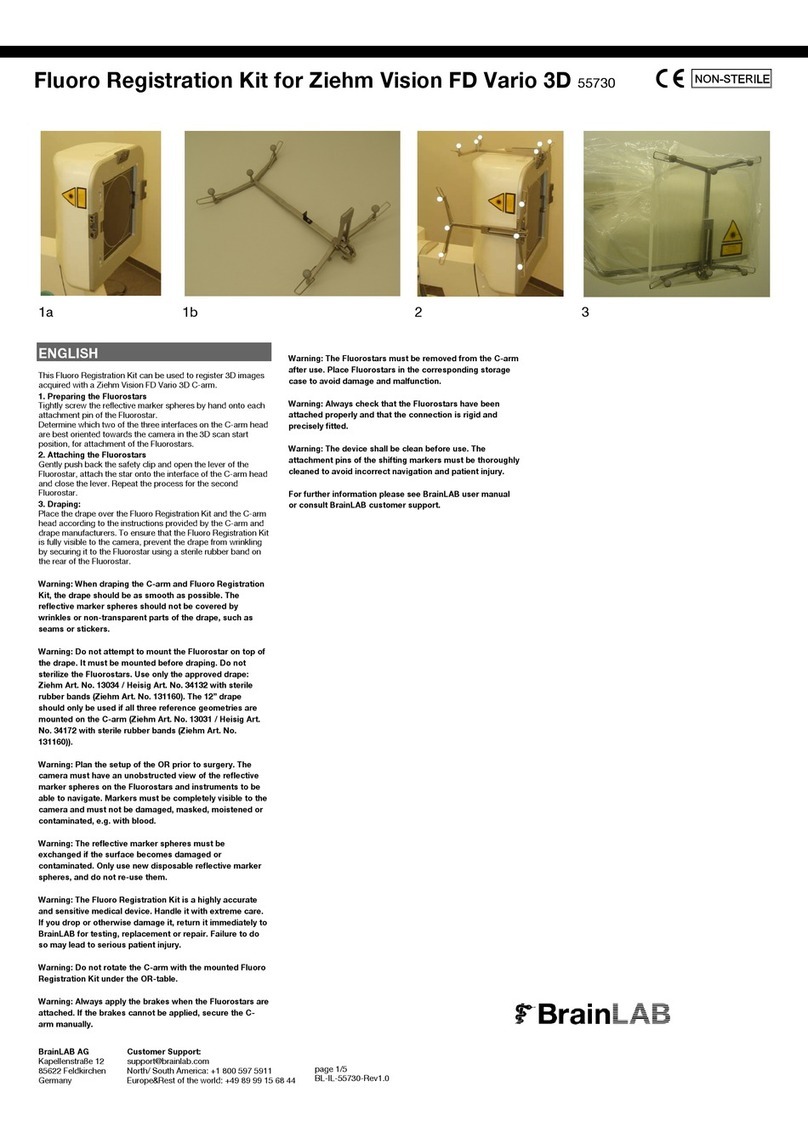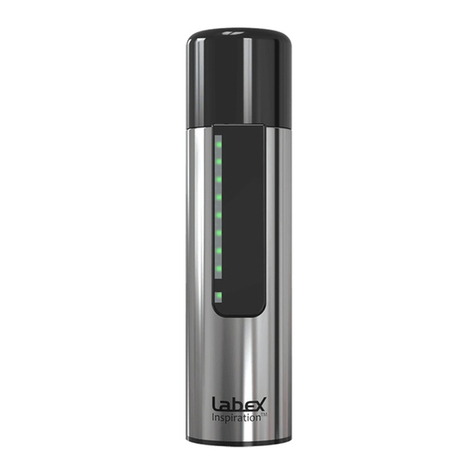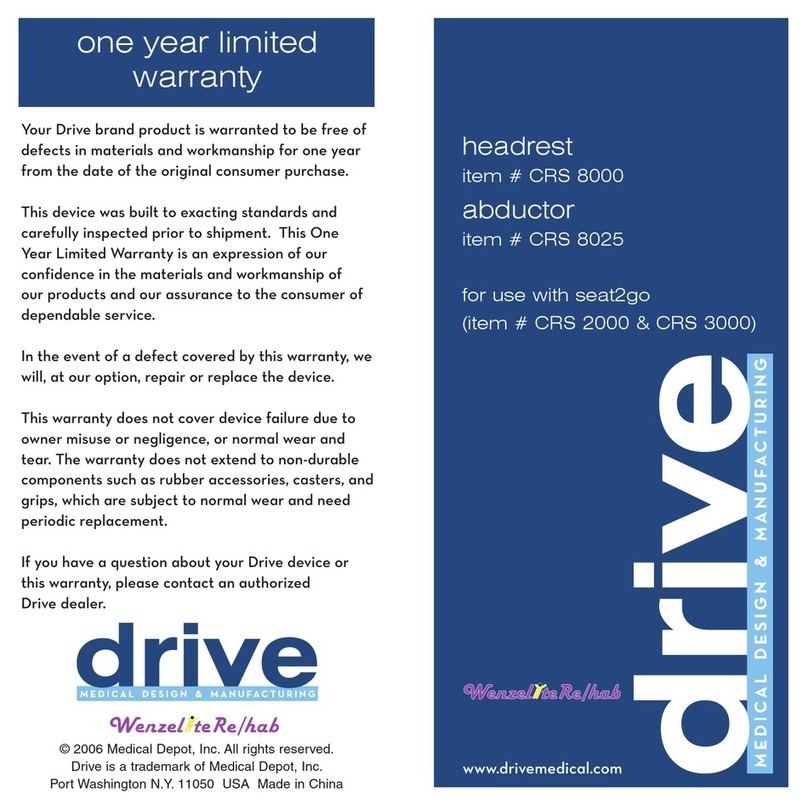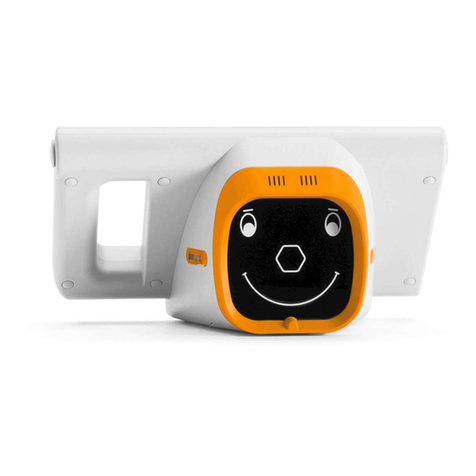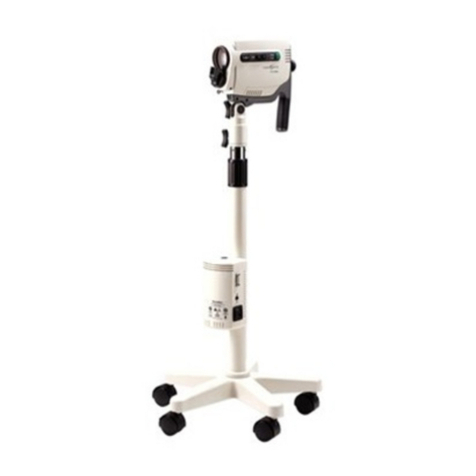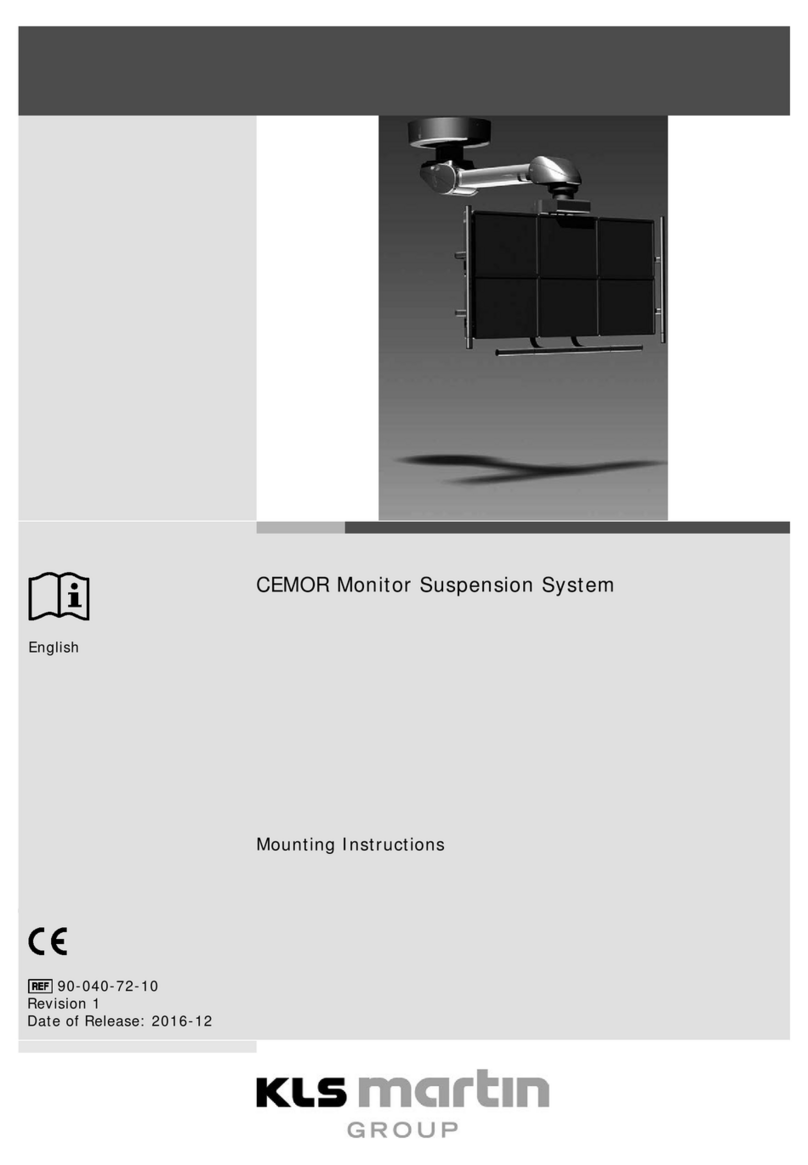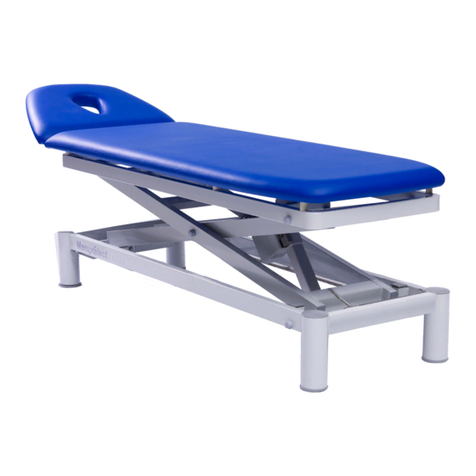Arjo AtmosAir 4000 Series User manual

EN · FR ·
Instructions for Use translation ·
407390-AH Rev 0 · 07/2018
INSTRUCTIONS FOR USE
AtmosAir with SAT Mattress
Replacement System
ATMOSAIR WITH SAT 4000 SERIES
ATMOSAIR WITH SAT 9000 SERIES
ATMOSAIR WITH SAT T-SERIES
ATMOSAIR WITH SAT V-SERIES
ATMOSAIR WITH SAT APOD 25


iii
DISCLAIMER OF WARRANTY AND LIMITATION OF REMEDY
ARJO HEREBY DISCLAIMS ALL EXPRESS OR IMPLIED WARRANTIES, INCLUDING WITHOUT LIMITATION
ANY IMPLIED WARRANTY OF MERCHANTABILITY OR FITNESS FOR A PARTICULAR PURPOSE, ON THE
ARJO PRODUCT(S) DESCRIBED IN THIS PUBLICATION. ANY WRITTEN WARRANTY OFFERED BY ARJO
SHALL BE EXPRESSLY SET FORTH IN THIS PUBLICATION OR INCLUDED WITH THE PRODUCT. UNDER
NO CIRCUMSTANCES SHALL ARJO BE LIABLE FOR ANY INDIRECT, INCIDENTAL OR CONSEQUENTIAL
DAMAGES AND EXPENSES, INCLUDING DAMAGES OR INJURY TO PERSON OR PROPERTY, DUE IN
WHOLE OR IN PART TO THE USE OF THE PRODUCT OTHER THAN THOSE FOR WHICH DISCLAIMER OF
WARRANTY OR LIMITATION OF LIABILITY IS EXPRESSLY PROHIBITED BY SPECIFIC, APPLICABLE LAW.
NO PERSON HAS THE AUTHORITY TO BIND ARJO TO ANY REPRESENTATION OR WARRANTY EXCEPT AS
SPECIFICALLY SET FORTH IN THIS PARAGRAPH.
Descriptions or specifications in Arjo printed matter, including this publication, are meant solely
to generally describe the product at the time of manufacture and do not constitute any express
warranties except as set forth in the written limited warranty included in this publication or with
this product. Information in this publication may be subject to change at any time. Contact Arjo for
updates.
Important Information For Users
In order for Arjo products to perform properly, Arjo recommends the following conditions. Failure to
comply with these conditions will void any applicable warranties.
• Use this product only in accordance with these instructions and applicable product labeling.
• Assembly, operations, extensions, re-adjustments, modifications, technical maintenance
or repairs must be performed by qualified personnel authorized by Arjo. Contact Arjo for
information regarding maintenance and repair.
• If applicable, ensure the electrical installation of the room complies
with the appropriate national / local electrical wiring standards.
Specic indications, contraindications, warnings, precautions and safety information exist
for Arjo’s therapeutic support systems. It is important for users to read and familiarize
themselves with these instructions and to consult the treating physician prior to patient
placement and product use. Individual patient conditions may vary.
Notice
This product has been configured from the manufacturer to meet specific voltage requirements.
Refer to the product information label for specific voltage.

iv

1
Table Of Contents
Introduction ............................................................................................................................................ 2
Indications............................................................................................................................................................... 2
Contraindications ................................................................................................................................................. 2
Risks and Precautions.......................................................................................................................................... 2
Safety Information................................................................................................................................................ 3
Preparation for Use............................................................................................................................... 5
Mattress Installation............................................................................................................................. 5
AtmosAir with SAT 4000, 9000 (all models), T-Series* , V-Series** (allmodels),
and APOD 25 (all models).................................................................................................................................. 5
AtmosAir with SAT V-Series ................................................................................................................................ 6
AtmosAir Pump Installation ............................................................................................................... 7
LED Indicators ........................................................................................................................................ 8
Patient Placement and Nursing Care ............................................................................................. 9
Alternating Pressure / Rotation Adjustment............................................................................................... 9
CPR ...........................................................................................................................................................................10
Transport Mode...................................................................................................................................................10
Skin Care.................................................................................................................................................................10
Incontinence / Drainage...................................................................................................................................10
General Operation..............................................................................................................................................10
Care and Cleaning...............................................................................................................................11
Fire Barrier..............................................................................................................................................................11
Cover Cleaning Options ...................................................................................................................................11
Cleaning AtmosAir Pump and Tubes (A and AR models)......................................................................12
Preventive Maintenance Schedule ...............................................................................................12
Daily Cleaning......................................................................................................................................................12
Weekly Cleaning..................................................................................................................................................12
Inspection / System Check-Out ....................................................................................................................13
Troubleshooting ..................................................................................................................................14
Parts Diagram - AtmosAir with SAT 4000.....................................................................................15
Parts Diagram - AtmosAir with SAT 9000 and T-Series............................................................16
Parts Diagram - AtmosAir with SAT V-Series...............................................................................17
Parts Diagram - AtmosAir with SAT APod 25 Series...................................................................18
Parts Diagram - AtmosAir Pump (A and AR models)...............................................................19
Replacement Parts ..............................................................................................................................20
Specifications........................................................................................................................................23
Electromagnetic Compatibility ......................................................................................................24
Symbols Used .......................................................................................................................................27
Customer Contact Information ......................................................................................................28

2
Introduction
It is recommended that all sections of this User Guide be read prior to product use. Carefully review
the Contraindications, Safety Information and Risks and Precautions sections prior to placing
a patient on any AtmosAir® with SAT™Mattress Replacement System (MRS).
Caregivers should review this information with the patient and the patient's family and / or legal
guardian. Save this User Guide in an easily accessible location for quick reference.
This User Guide is comprised of the following AtmosAir MRS models / series:
• AtmosAir with SAT 4000 Series (non powered, indicates pump not available)
• AtmosAir with SAT 9000 Series (non powered)
• AtmosAir with SAT 9000A Series (powered with alternating pressure)
• AtmosAir with SAT 9000AR Series (powered with alternating pressure and rotation)
• AtmosAir with SAT T-Series (non powered)
• AtmosAir with SAT T-Series A (powered with alternating pressure)
• AtmosAir with SAT T-Series AR (powered with alternating pressure and rotation)
• AtmosAir with SAT V-Series (non powered)
• AtmosAir with SAT APOD 25 (non powered)
• AtmosAir with SAT APOD 25 A (powered with alternating pressure)
• AtmosAir with SAT APOD 25 AR (powered with alternating pressure and rotation)
The AtmosAir MRS comes in a wide variety of lengths and widths to support various customer
requirements. Contact an Arjo representative for additional product information.
Indications
• AtmosAir MRS are intended to treat and prevent all categories of pressure injuries.
Contraindications
• unstable vertebral fracture
• cervical and skeletal traction
Risks and Precautions
Transfer – Standard precautions should be taken during patient transfer.
Rotation / Alternating Pressure (for A and AR models) – Prior to engaging rotation or
alternating pressure, ensure that bed frame has side rails and that all side rails are fully engaged in
full upright and locked position. Ensure pump hoses are properly connected to appropriate side
of mattress for the desired function (see AtmosAir Pump Installation). WARNING: Incorrect
connection of pump hoses can increase risk of potential patient falls.
Side Rails and Restraints – WARNING: Use or non-use of restraints, including side rails, can
be critical to patient safety. Serious or fatal injury can result from the use (potential entrapment)
or non-use (potential patient falls) of side rails or other restraints. See related Safety Information.
Patient Migration – Specialty surfaces have different shear and support characteristics than
conventional surfaces and may increase the risk of patient movement, sinking and /or migration into
hazardous positions of entrapment and / or inadvertent bed exit. Monitor patients frequently
to guard against patient entrapment.

3
Oxygen Use – DANGER: Risk of explosion if the AtmosAir Pump is used in the presence of
flammable anesthetics. Use of this product’s pump in an oxygen-enriched environment may produce
potential of fire hazard. This equipment is not suitable for use in the presence of a flammable
anesthetic mixture with air or with oxygen or nitrous oxide. Unplug and do not use pump when
using oxygen-administering equipment other than the nasal mask or half-bed-length tent type.
Shock Hazard – Electrical shock hazard; do not remove pump case covers. Refer to qualified service
personnel.
Safety Information
Patient Entrance / Exit – Caregiver should always aid patient in exiting the bed. Make sure a
capable patient knows how to get out of bed safely (and, if necessary, how to release the side rails)
in case of fire or other emergency.
Turning - CAUTION: Prior to engaging turn feature, ensure that bed frame has side rails and that all
side rails are in their full up and locked position.
Brakes – Caster brakes should always be locked once the bed is in position. Verify wheels are locked
before any patient transfer to or from the bed.
Bed Height – To minimize risk of falls or injury, the bed should always be in the lowest practical
position when the patient is unattended.
Bed Frame – Always use a standard healthcare bed frame with this mattress, with any safeguards
or protocols that may be appropriate. Bed frame and side rails (if used) must be properly sized
relative to the mattress to help minimize any gaps that might entrap a patient's head or body. It is
recommended that bed and side rails (if used) comply with all applicable regulations and protocols.
CPR - Level the bed and disconnect pump (if present). Lower side rails and initiate CPR per facility
protocols. Consider use of backboard if indicated. After CPR remove backboard, if used, reconnect
pump, if present, raise siderails and reconfigure bed and accessories as in initial placement.
Head of Bed Elevation – Keep head of bed as low as possible to help prevent patient migration.
Side Rails / Patient Restraints - Whether and how to use side rails or restraints is a decision that
should be based on each patient’s needs and should be made by the patient and the patient’s
family, physician and caregivers, with facility protocols in mind. Caregivers should assess risks and
benefits of side rail / restraint use (including entrapment and patient falls from bed) in conjunction
with individual patient needs, and should discuss use or non-use with patient and / or family.
Consider not only the clinical and other needs of the patient but also the risks of fatal or serious
injury from falling out of bed and from patient entrapment in or around the side rails, restraints or
other accessories. In the US, for a description of entrapment hazards, vulnerable patient profile and
guidance to further reduce entrapment risks, refer to FDA’s Hospital Bed System Dimensional and
Assessment Guidance To Reduce Entrapment. Outside the US, consult the local Competent Authority
or Government Agency for Medical Device Safety for specific local guidance. Consult a caregiver and
carefully consider the use of bolsters, positioning aids or floor pads, especially with confused, restless
or agitated patients. It is recommended that side rails (if used) be locked in the full upright position
when the patient is unattended. Make sure a capable patient knows how to get out of bed safely
(and, if necessary, how to release the side rails) in case of fire or other emergency. Monitor patients
frequently to guard against patient entrapment.

4
CAUTION: When selecting a standard mattress, ensure the distance between
top of side rails (if used) and top of mattress (without compression) is at
least 8.66 in (220 mm) to help prevent inadvertent bed exit or falls. Consider
individual patient size, position (relative to the top of the side rail) and
patient condition in assessing fall risk.
I.V. and Drainage Tubes – I.V. and drainage tubes should always have slack for alternating pressure
or rotation and other patient movements.
Skin Care – Monitor skin conditions regularly and consider adjunct or alternative therapies for high
acuity patients. Give extra attention to any possible pressure points and locations where moisture or
incontinence may occur or collect. Early intervention may be essential to preventing skin breakdown.
Fluids – Avoid spilling fluids on pump controls. If spills do occur, clean fluid from pump wearing
rubber gloves or while unit is unplugged to avoid any possibility of shock. Once fluid is removed,
check operation of components in area of spill.
Fluids remaining on controls can cause corrosion, which may cause components
to fail or operate erratically, possibly producing potential hazards for patient
and sta.
Avoid Fire Hazards – To minimize risk of fire, connect the bed’s power cord directly into a wall-
mounted outlet. Do not use extension cords or multiple outlet strips. In the US, review and follow
FDA’s Safety Tips for Preventing Hospital Bed Fires.
No Smoking in Bed – Smoking in bed can be dangerous. To avoid the risk of fire, smoking in bed
should never be allowed.
Power Cord – Position power cord to avoid a tripping hazard and / or damage to the cord. Ensure
power cord is kept free from all pinch points and moving parts and is not trapped under casters.
Improper handling of the power cord can cause damage to the cord, which may possibly produce
risk of fire or electric shock.
General Protocols – Follow all applicable safety rules and institution protocols concerning patient
and caregiver safety.
Fire Barrier Contact – Care should be taken with regards to the fire barrier when the cover is
removed. It is recommended that Personal Protective Equipment (PPE) is used during handling of
the mattress with the fire barrier exposed to avoid contact with loose particles. To ensure optimal
product performance, avoid over-handling of the fire barrier and handle with care. If the fire barrier
becomes damaged or soiled it should be replaced.
Disposal – At the end of useful life, dispose of waste according to local requirements or contact
the manufacturer for advice.

5
Preparation for Use
For information concerning the bed frame refer to the manufacturers'
User Guide.
1. Open shipping container(s).
Do not use sharp instruments to open boxes. Damage to mattress could
result.
2. Remove AtmosAir with SAT MRS from plastic protective cover.
The mattress cover may appear wrinkled when unpacked. To remove
wrinkles, allow mattress up to 24 hours to accommodate; see
Troubleshooting for more information. Wrinkles will not aect ination
or function, so mattress may be used immediately if needed.
3. Check mattress surface for tears or cracking; do not use if tears or cracks are present.
4. If re-installing mattress onto a new frame or for a new patient, check mattress surface
for staining and soiling; clean and / or disinfect as required (see Care and Cleaning).
5. Level bed and lock brakes.
6. Remove existing mattress from bed frame.
Mattress Installation
AtmosAir with SAT 4000, 9000 (all models), T-Series* , V-Series**
(allmodels), and APOD 25 (all models)
1. Position mattress on bed frame with logo facing up and product information tags at foot
end of bed.
Magnets are integrated on the AtmosAir T-Series bottom cover to help
keep the mattress in place during foot section extension / retraction.
2. Ensure there are no gaps between mattress and bed frame or side rails.
Always use a standard healthcare bed frame with safeguards or protocols
that may be appropriate. Frame and side rails must be properly sized
relative to the mattress to help minimize any gaps that might entrap
a patient’s head or body.
* T-Series is compatible for use with the Hill-Rom Total Care® bed frame.
** V-Series is compatible for use with the Hill-Rom VersaCare® frame.

6
AtmosAir with SAT V-Series
V-Series mattress on VersaCare®Frame
1. Position mattress on bed frame
with logo facing up and product
information tags at foot end of bed.
2. Slide locking bar located in pocket
on underside of head-end of
mattress to one side, as shown
at right (Figure 1).
3. Slip end of locking bar into slot on
head-end of bed frame,
as shown below (Figures 2 and 3).
4. Slip other end of locking bar into other slot on head-end
of bed frame, as shown below (Figure 4).
5. Repeat steps 2 through 4 to secure foot-end of mattress.
Foot-end locking bar may
need to be exed slightly
to slip into foot-end slots.
Magnets are integrated
on the AtmosAir V-Series
bottom cover to help keep
the mattress in place
during foot section extension
/ retraction.
Bed Frame
HEAD OF BED
Underside of Mattress
Locking Bar
Pocket
Locking Bar
Bed Frame
Locking Bar Slot Slot
Figure 3
Figure 4
Figure 2
Locking Bar Slot
Figure 1

7
Figure 5
Finished Installation
When removing the AtmosAir with SAT V-Series, be sure to disengage
locking bar and magnets before removing from bed frame.
AtmosAir Pump Installation
Pump installation steps for A and AR models:
1. Place pump on a solid stationary surface or suspend
on end of bed frame with built-in hanger.
2. Attach pump hoses to mattress,
as shown at right (Figure 6):
A Models (alternating pressure):
• Attach blue hoses to the mattress connectors
on the patient left side (marked with BLUE
tag) of the mattress for alternating pressure.
AR Models (alternating pressure / rotation):
• Attach blue hoses to the mattress connectors
on the patient left side (marked with BLUE
tag) of the mattress for alternating pressure.
• Attach red hoses to the mattress connectors on
the patient right side (marked with REDtag)
of the mattress for rotation.
3. Ensure air hoses are not kinked and will not be
pinched by any articulated bed mechanisms.
4. Attach hose connectors to the pump.
5. Plug pump unit into a properly-grounded wall outlet.
6. Verify power to this outlet is not controlled by a wall switch.
7. Switch pump on.
Pump Hoses
Mattress
Connectors
Tag
Figure 6

8
LED Indicators
1. Green LED is lit when the pressure is at the set level.
2. Yellow LED is lit when the pressure is below the set level. Check connections.
3.
MAX. MIN.
ALTERNATING PRESSURE
NORMAL PRESSURE
LOW PRESSURE
ON
OFF
POWER
Figure 7

9
Patient Placement and Nursing Care
It is recommended that all sections of this User Guide be read prior to product use. Carefully review
the Contraindications, Safety Information and Risks and Precautions sections prior to placing
a patient on any AtmosAir MRS.
1. Transfer patient following all applicable safety rules and institution protocols.
2. Center patient side-to-side and head-to-foot on AtmosAir MRS surface.
3. Ensure all sections of the mattress fully support the patient.
Mattress handles are for mattress transport only.
Alternating Pressure / Rotation Adjustment
The AtmosAir with SAT 9000 and T-Series models provide alternating pressure and / or rotation.
The level of alternating pressure or rotation can be adjusted for patient comfort.
Prior to engaging alternating pressure or rotation, ensure that bed frame
has side rails and that all side rails are fully engaged in full upright and
locked position.
Ensure pump hoses are properly connected to appropriate side
of mattress for the desired function (see AtmosAir Pump Installation).
• Rotate the control knob on the
pump clockwise to increase the
intensity of alternating pressure
relief or the level of rotation.
• Rotate the control knob on the
pump counter-clockwise to reduce
the intensity of alternating pressure
relief or the level of rotation.
The AtmosAir MRS
DOES NOT provide
a Nurse Hold function.
MAX. MIN.
ALT. PRESSURE / ROTATION
Figure 8

10
CPR
1. Level bed.
2. Disconnect hoses from pump to level mattress
(for A and AR models), as shown at right (Figure 8).
3. Lower or remove side rail on caregiver’s side
if necessary.
4. Begin CPR as per facility protocol.
Consider use of backboard if indicated.
5. After CPR is performed:
• Remove backboard if used
• Reconnect pump hoses to mattress
(for A and AR models).
• Raise or install side rail as necessary.
• Reconfigure bed and accessories
as in initial placement.
Transport Mode
When disconnected from the pump, the AtmosAir 9000A MRS will operate as a reactive surface with
the full operation of the SAT system. For transport, there are two options:
1. Disconnect the tube assembly from the mattress. Valves will close off as soon as the tube
assembly is disconnected.
2. Disconnect the tube assembly from the pump and securely place the transport cap on the
tube assembly to maintain a seal.
Skin Care
• Remove excess moisture and keep skin dry and clean.
• Check patient’s skin regularly, particularly in areas where incontinence and drainage occur.
• Ensure linens under patient are not wrinkled.
Incontinence / Drainage
• Use moisture-impermeable underpads for incontinent patients.
• Wipe surface clean and replace bed linens as required (see Care and Cleaning.)
General Operation
Avoid contact of sharp instruments with the AtmosAir MRS.
Punctures, cuts and tears may prevent proper inflation and air
pressure maintenance.
Figure 9
Figure 10

11
Care and Cleaning
The following processes is recommended, but should be adapted to comply with local institution
protocols. If you are uncertain, you should seek advice from your local Infection Control Specialist.
The AtmosAir MRS should be routinely decontaminated between patients and at regular intervals
while in use.
If a powered AtmosAir MRS, ensure power cord is unplugged from wall
outlet before performing care and cleaning.
Do not use Phenol-based solutions or abrasive componds or pads on the
cover during decontamination process as these will damage the surface
coating. Do not boil or autoclave the cover. Avoid immersing electrical parts
in water during the cleaning process. Do not spray cleaning solution directly
onto the pump.
Fire Barrier
Care should be taken with regards to the fire barrier when the cover is removed. It is recommended
that Personal Protective Equipment (PPE) is used during handling of the mattress with the fire barrier
exposed to avoid contact with loose particles. To ensure optimal product performance, avoid over-
handling of the fire barrier and handle with care. Fire barrier should be replaced if soiled or damaged.
Cover Cleaning Options
Sewn AtmosAir MRS (Top cover can not be removed from base)
1. If a powered MRS, unplug pump before cleaning.
2. Remove or push bed linens to center of mattress.
The sewn AtmosAir MRS cover is cleaned by wipe down methods only.
Do not launder as damage to the base may occur.
3. Wipe and rinse any soiling from the mattress surface and base.
Use 1000 ppm chlorine or 70% alcohol.
4. Rinse with a wet towel to remove chemicals.
5. After wipe down, dry surface with towel.
6. Ensure bed linens are refitted and not wrinkled under patient.
7. Clean pump and tubes (if needed) by wiping with a damp cloth.
RF Welded AtmosAir MRS (Detachable top cover)
1. If a powered MRS, unplug pump before cleaning.
2. Push bed linens to center of mattress to wipe down, remove to launder top cover
or wipedown as described below.
The RF Welded AtmosAir MRS has a detachable top cover that can be
laundered. However the base is cleaned by wipe down methods only.
Do not launder base as damage may occur.
3. Wipe and rinse any soiling from the mattress surface and base. Use 1000 ppm chlorine or
70% alcohol.
4. Rinse with a wet towel to remove chemicals.
5. After wipe down, dry surface with towel.

12
6. Ensure bed linens are refitted and not wrinkled under patient.
7. Clean pump and tubes (if needed) by wiping with a damp cloth.
Laundering Detachable Top Cover
1. Unzip the top cover from the base for laundering.
Do not launder base as damage may occur.
2. Recommended wash temperature for top cover is 60° C (140° F) for 15 minutes.
3. Maximum wash temperature is 95° C (203° F) for 15 minutes.
4. Tumble dry at 60° C (140° F) or air dry.
5. Maximum drying temperature 80° C (176° F).
Cleaning AtmosAir Pump and Tubes (A and AR models)
1. Ensure pump is unplugged.
2. Wipe surface of pump and tubes with coarse cloth using an approved disinfectant
germicide mixed to manufacturer’s instructions. Do not ood any part of the pump
with cleaning solution.
Avoid spilling uids on pump controls. If spills do occur, clean uid from
pump wearing rubber gloves or while unit is unplugged to avoid any
possibility of shock. Once uid is removed, check operation of components
in area of spill. Fluids remaining on controls can cause corrosion, which may
cause components to fail or operate erratically, possibly producing potential
hazards for patient and sta.
3. Wipe off excess solution.
4. Disinfect pump and tubes with a chlorine solution (mixed according to the instructions in
the Care and Cleaning section). Using a clean cloth, wring out excess solution until cloth
is damp. Wipe pump surface and tubes with damp cloth.
5. Allow to air dry.
Preventive Maintenance Schedule
Preventive maintenance for the AtmosAir MRS consists of regular cleaning (see Care and Cleaning)
and an overall system check-out to be performed at the intervals described below.
All components must be cleaned, disinfected and inspected after each patient’s use and
before use by a new patient. Always use standard precautions, treating all used equipment as
contaminated. Institutions should follow local protocols for cleaning and disinfection.
Daily Cleaning
The cover should be wiped daily with a mild soap and water solution.
Weekly Cleaning
The pump and hoses of A and AR models should be cleaned weekly.

13
Inspection / System Check-Out
Check each of the following before placing the AtmosAir MRS with a new patient:
1. Check mattress surface for tears or cracking; do not use if tears or cracks are present.
2. Ensure mattress is free of stains and is not overly faded.
For A and AR models:
1. Ensure air inlet hoses and connectors on mattress and pump are clean and undamaged.
2. Ensure pump and power cord are clean and undamaged.
3. Ensure pump hanger brackets are secure and operate correctly.
4. Ensure power switch and comfort control knob both operate correctly.
5. Attach pump to the red rotation hoses and power on to ensure
that the mattress surface tilts and there are no air leaks.
6. Attach pump to the blue alternating pressure hoses
and power on to ensure there are no air leaks.

14
Troubleshooting
Do not attempt troubleshooting outside this guide or where the solution recommends to contact
Arjo. Any unauthorized service, modification, alteration or misuse may lead to serious injury and / or
product damage and will void all applicable warranties.
SYMPTOM POSSIBLE CAUSE SOLUTION
Green lamp on pump does not light when
power switch is set to the ON position.
Power cord may be unplugged. Plug in power cord.
Wall outlet may be controlled
by a wall switch.
Plug power cord into dierent wall outlet.
Circuit breaker for wall switch
may be tripped or blown.
Reset circuit breaker or replace fuse.
Power cord or power switch
may be damaged.
Contact Arjo for assistance.
Mattress inates only to one side
when in rotation mode.
Tubing not connected properly. Ensure red hoses are connected to hoses
marked with red tag for rotation.
Tubing kinked. Check tubing inside mattress for kinks.
Tubing disconnected. Check tubing inside mattress
for possible disconnect.
Hole in rotation bladder. Check deated rotation bladder for holes.
Mattress too rm upon arrival. Dierence in altitude not
sucient to open valves.
Apply weight to mattress to open valves.
Mattress cover too wrinkled upon removal
from shipping container.
Internal components have not
accommodated to environment. This does
not aect ination or function.
Let mattress accommodate for 24 hours.
If problem continues, contact Arjo for
assistance.
Mattress is not rm. Tubing not connected properly. Check tubing inside mattress
for loose connectors.
Tubing kinked. Check tubing inside mattress
for possible kinks.
Tubing disconnected. Check tubing inside mattress
for possible disconnect.
Holes in or damaged to SAT system. Check SAT system for holes or damage,
or contact Arjo for assistance.

15
Parts Diagram - AtmosAir with SAT 4000
All hoses were removed to improve diagram readability.
The fire barrier (standard on all RF welded mattresses, optional for some sewn mattresses)
is a sleeve that fits over the foam and SAT assemblies.
The SAT Cover, SAT Cells, SAT Interliner and rotation bladders (for A and AR
models) are all part of the integrated SAT System and cannot be ordered
separately. See Replacement Parts for a complete list of
SAT Systems.
RF Welded Mattress
Separate Cover
Separate Base
Detachable Top Cover
Sewn Mattress
Cover and Base
Cover not detachable
Foam
SAT Cover
(part of SAT system)
SAT Interliner
(part of SAT system)
SAT Cell
(part of SAT system)
Fire Barrier
(standard)
OR

16
Parts Diagram - AtmosAir with SAT 9000 and T-Series
All hoses were removed to improve diagram readability.
The fire barrier (standard on all RF welded mattresses, optional for some sewn mattresses)
is a sleeve that fits over the foam and SAT assemblies.
The SAT Cover, SAT Cells, SAT Interliner and rotation bladders (for A and AR
models) are all part of the integrated SAT System and cannot be ordered
separately. See Replacement Parts for a complete list of
SAT Systems.
Foam
SAT Cover
(part of SAT system)
SAT Interliner
(part of SAT system)
(image for reference only)
SAT Cell
(part of SAT system)
Rotation Bladders
(AR Models only)
Fire Barrier (standard)
RF Welded Mattress
Seperate Cover
Seperate Base
Detachable Top Cover
Sewn Mattress
Cover and Base
Cover not detachable
OR
This manual suits for next models
10
Table of contents
Languages:
Other Arjo Medical Equipment manuals
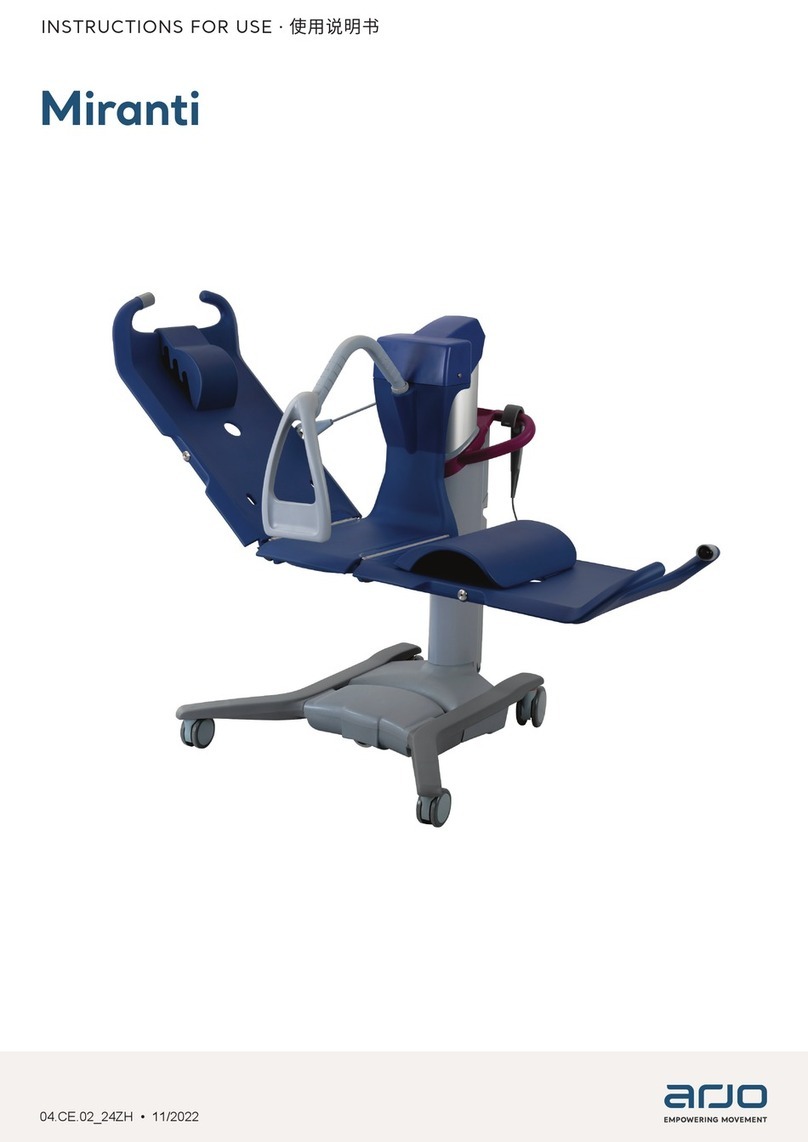
Arjo
Arjo Miranti User manual
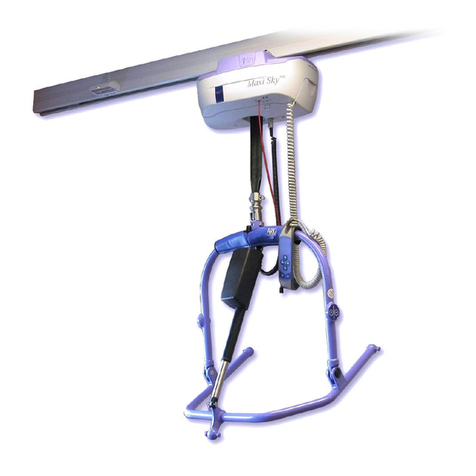
Arjo
Arjo Maxi Sky 600 ECS User manual
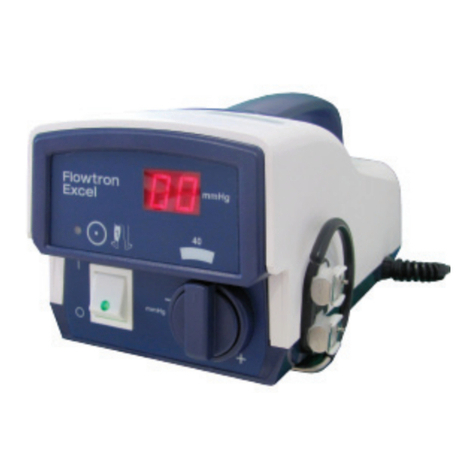
Arjo
Arjo Flowtron Excel User manual
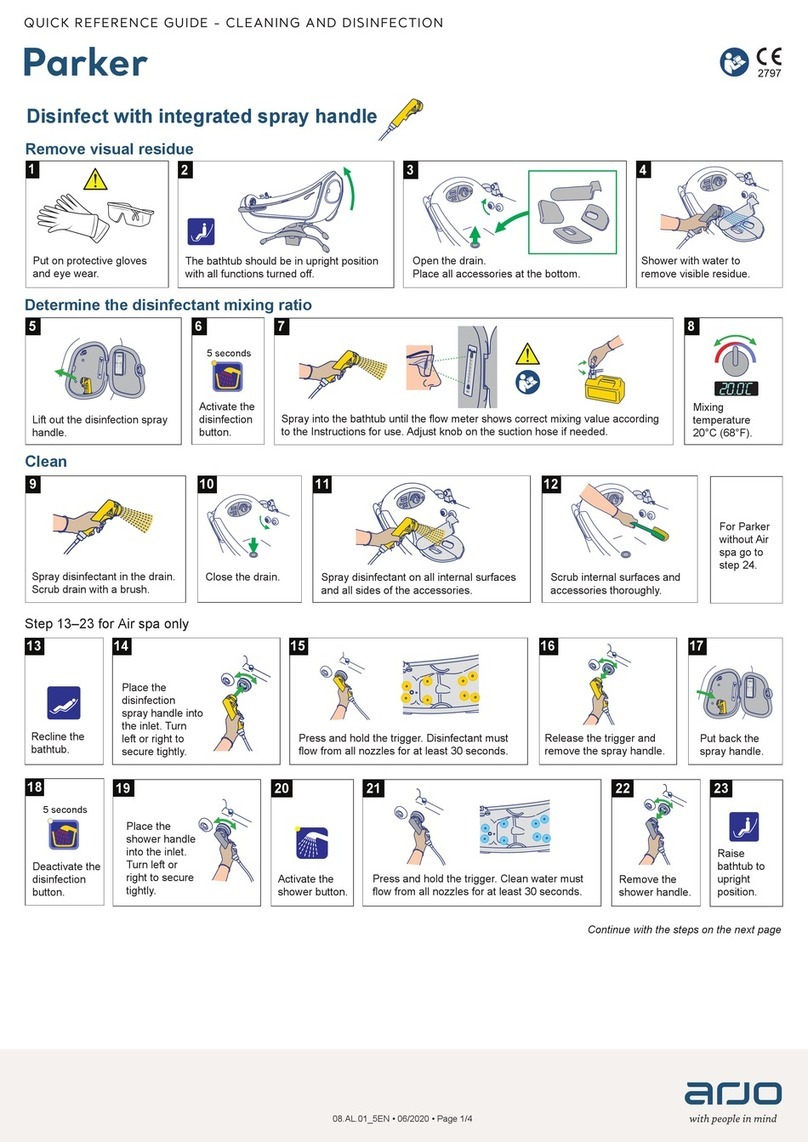
Arjo
Arjo Parker User manual
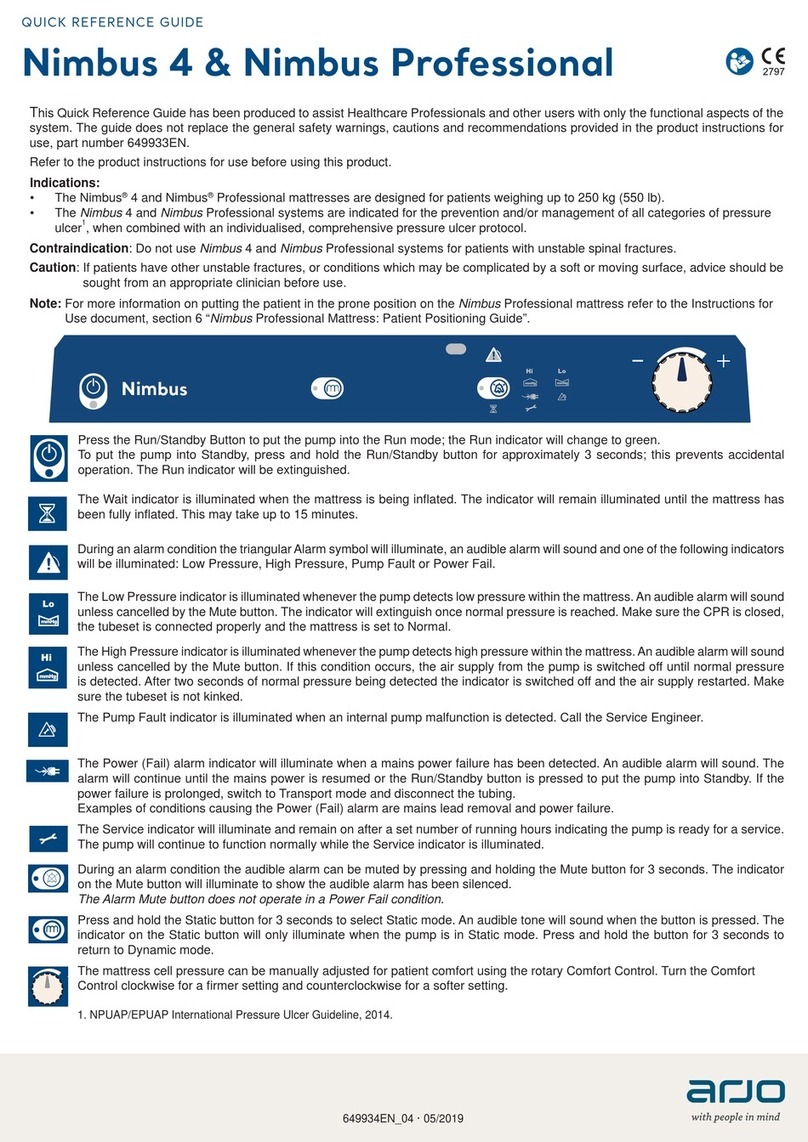
Arjo
Arjo Nimbus 4 User manual

Arjo
Arjo Miranti User manual
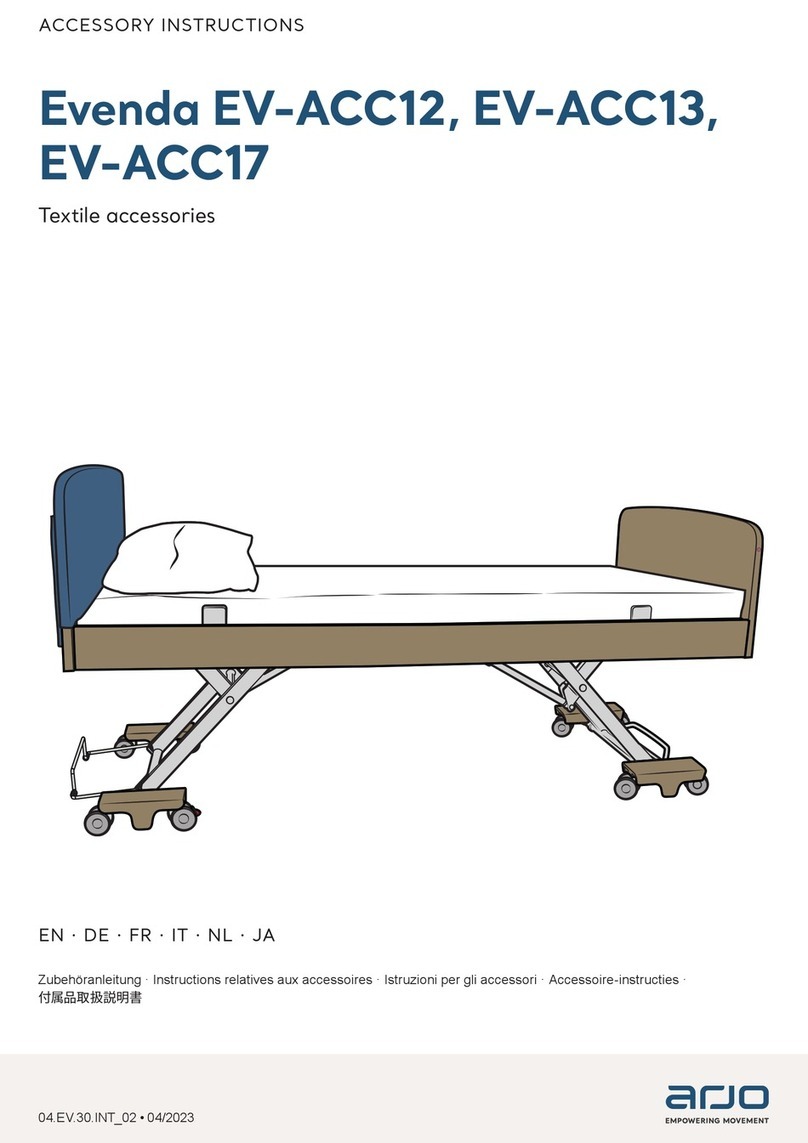
Arjo
Arjo Evenda EV-ACC12 User manual
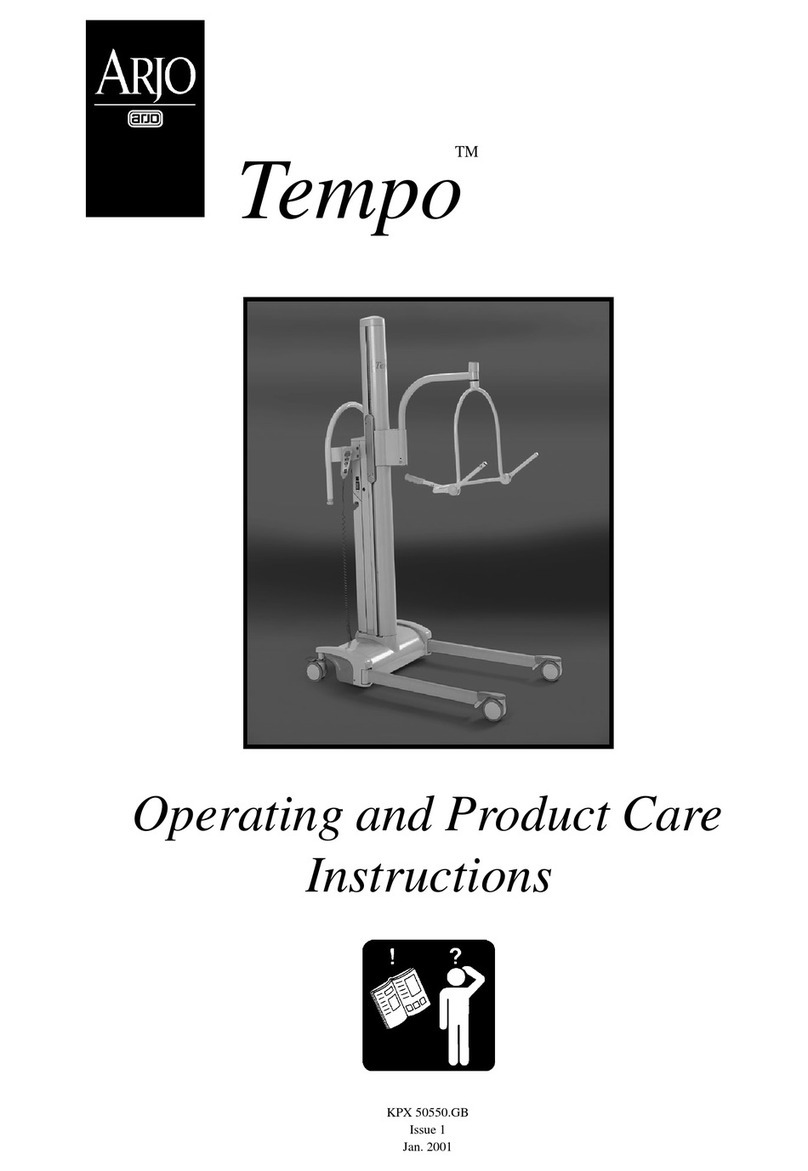
Arjo
Arjo Tempo Installation guide
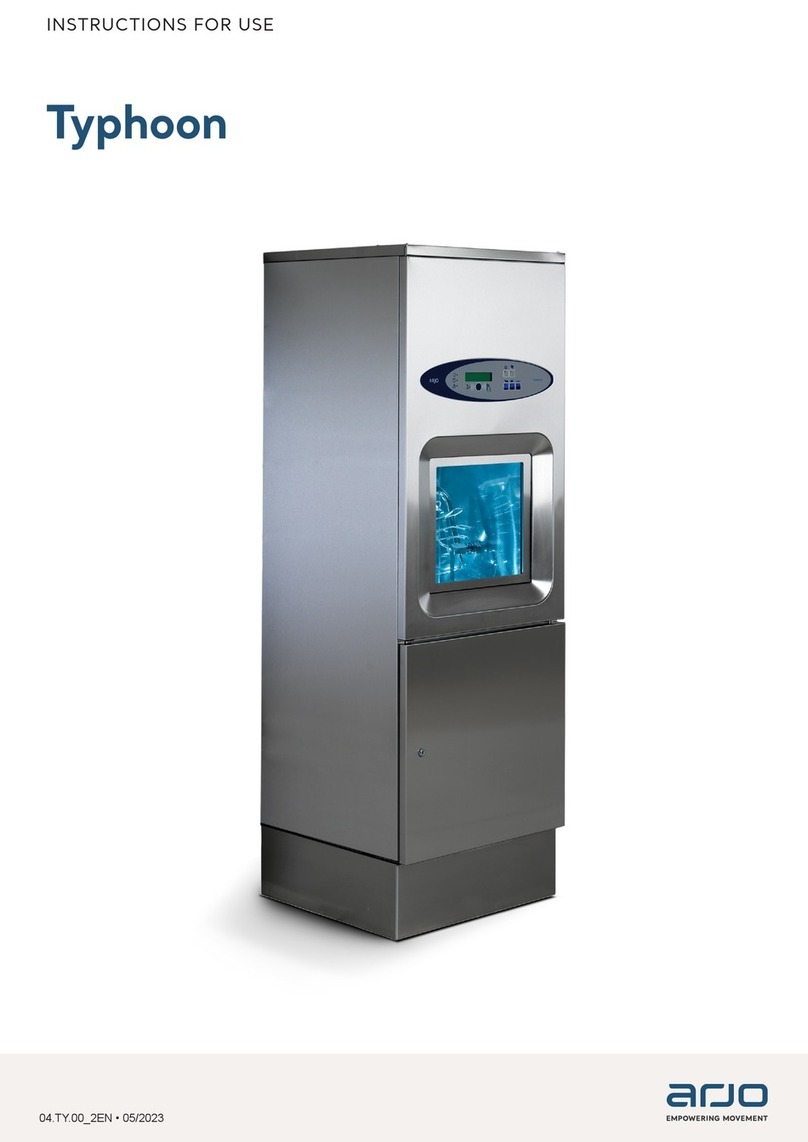
Arjo
Arjo Typhoon User manual

Arjo
Arjo Evenda EV-ACC05 User manual

Arjo
Arjo SARA PLUS User manual
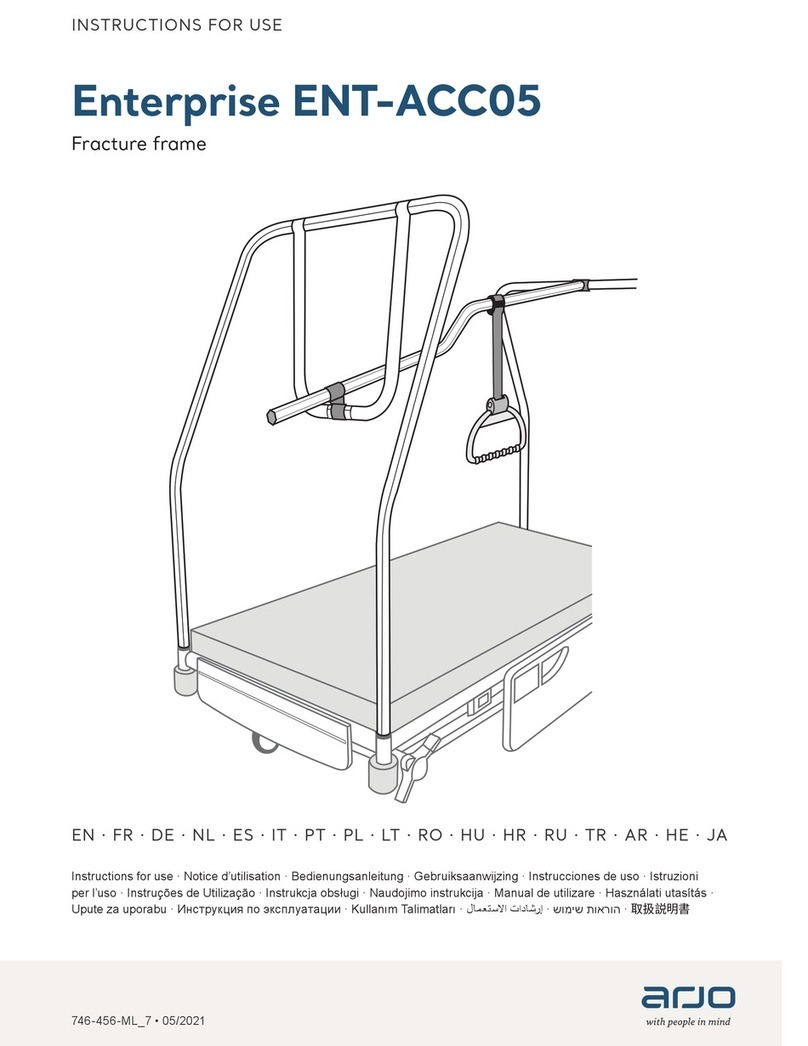
Arjo
Arjo Enterprise ENT-ACC05 User manual
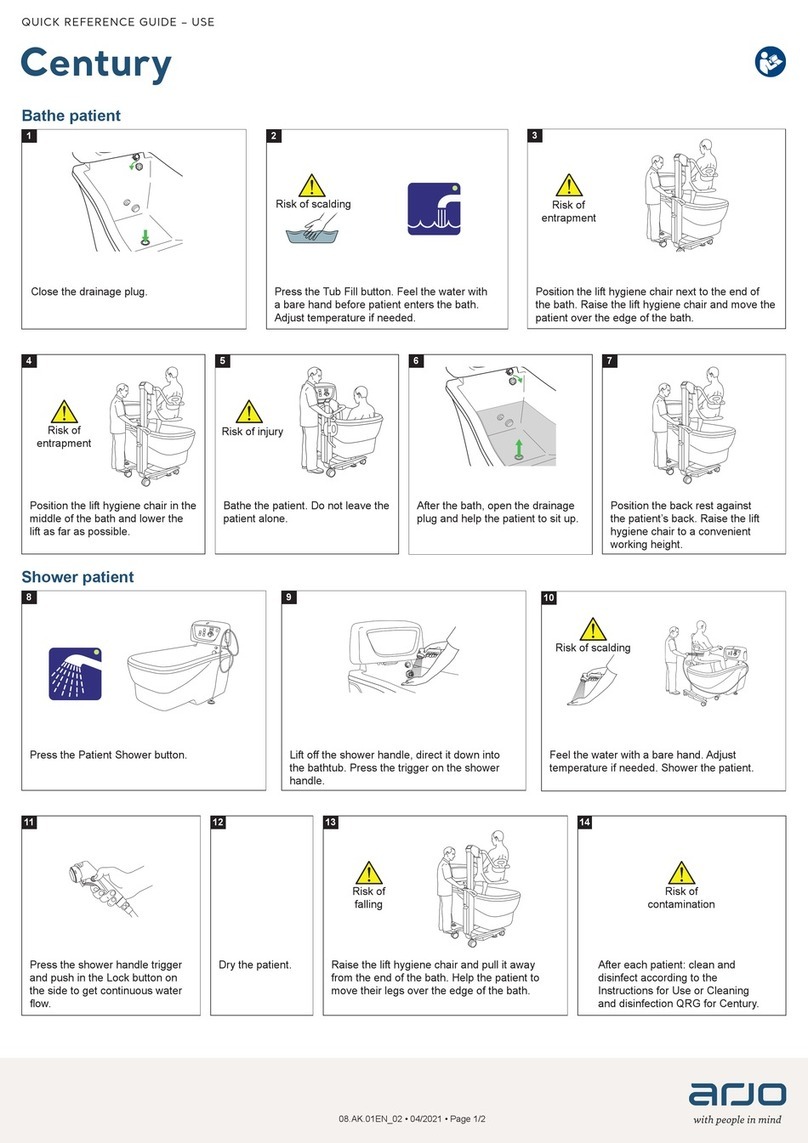
Arjo
Arjo Century User manual

Arjo
Arjo Prioma User manual
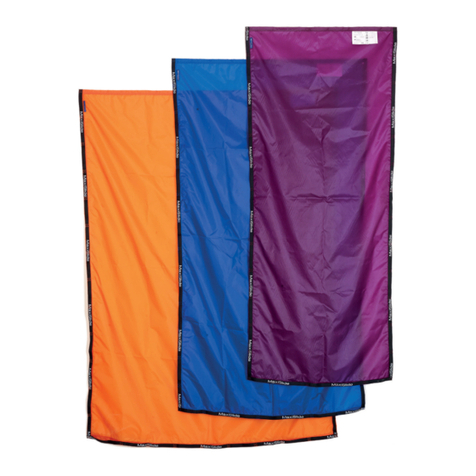
Arjo
Arjo MaxiSlide User manual
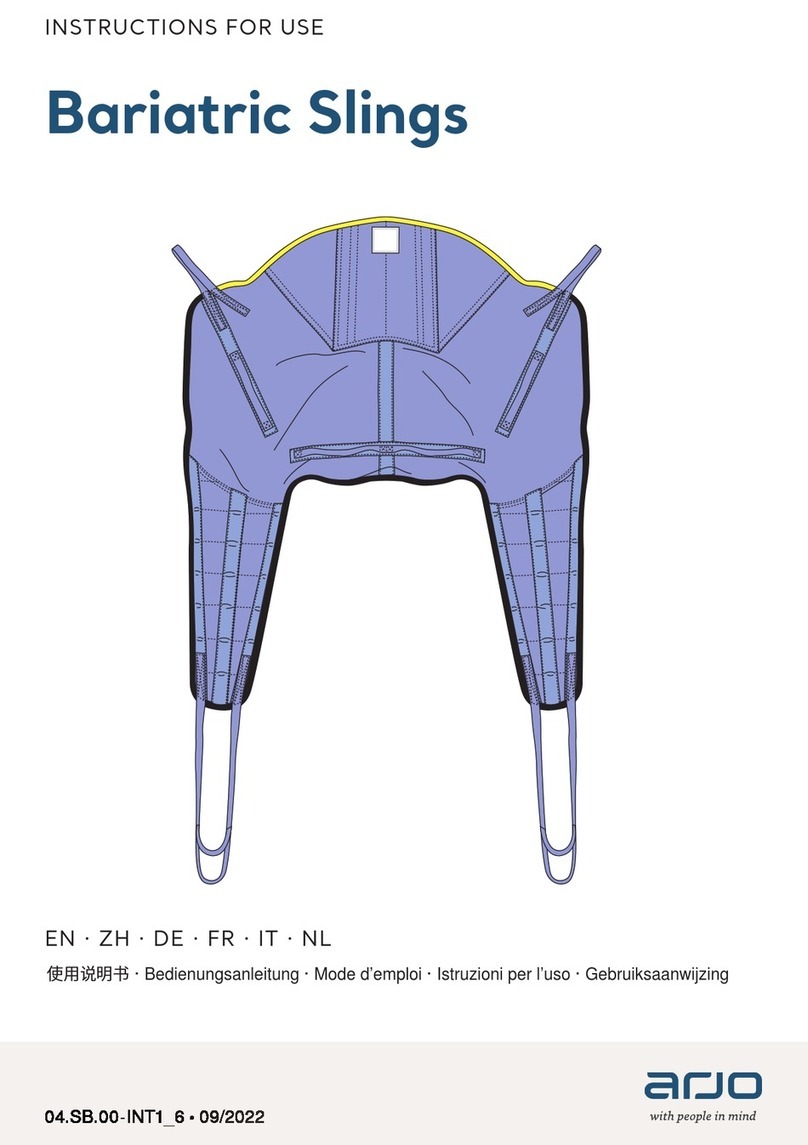
Arjo
Arjo MAA8000 User manual

Arjo
Arjo First Spet Select User manual
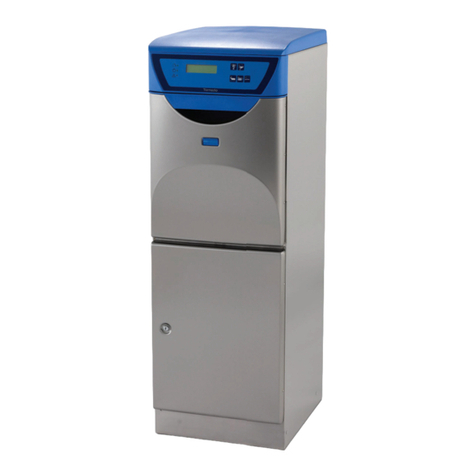
Arjo
Arjo TORNADO FD1800 User manual
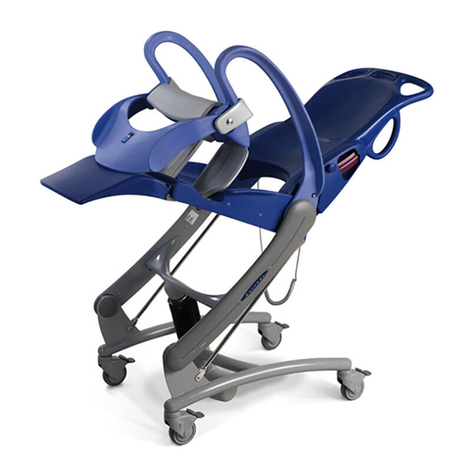
Arjo
Arjo CARENDO Operating instructions
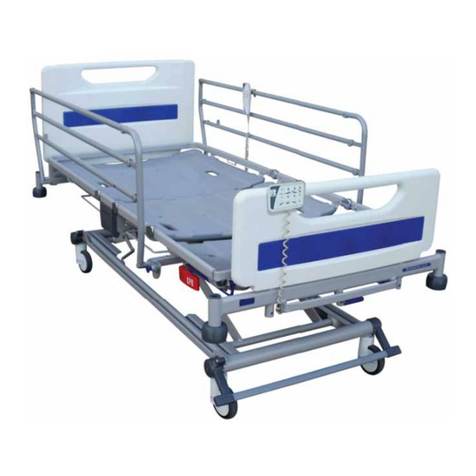
Arjo
Arjo Enterprise 5000X User manual
